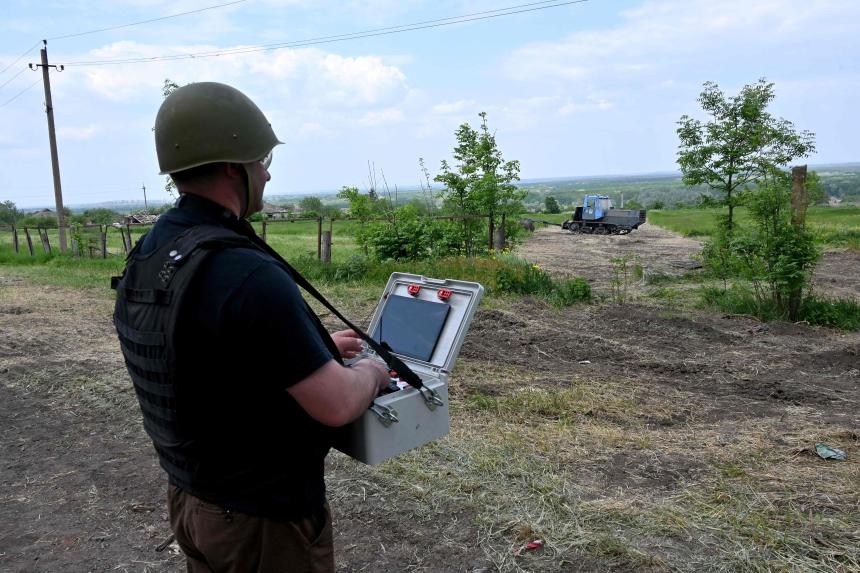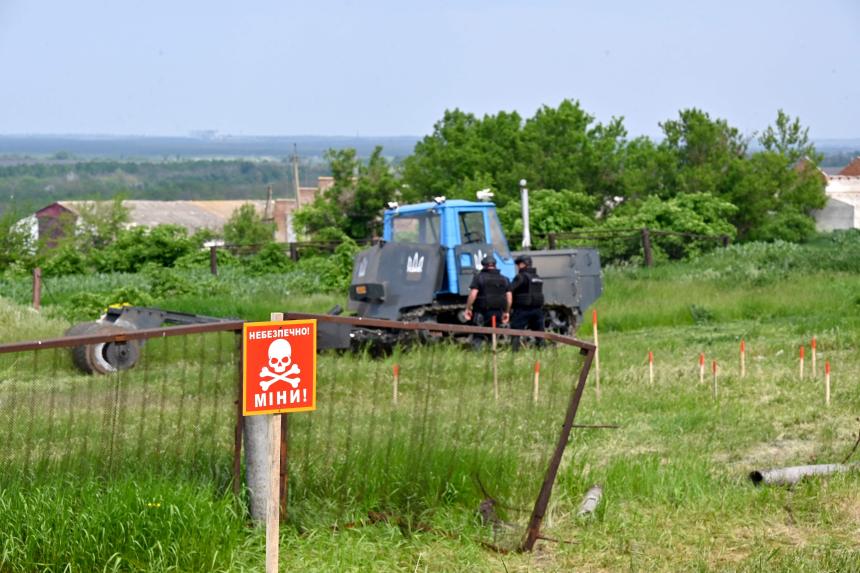GENEVA - Clearing the landmines in Ukraine will require an operation comparable to clearing Europe of explosive hazards after World War II, the United Nations said on Wednesday.
It will take up to US$300 million (S$402 million) a year over the next five years to clear those landmines causing the biggest drag on Ukraine’s economy, said Mr Paul Heslop, the head of UN mine action for the UN Development Programme in Ukraine.
“What we’re facing in Ukraine is very much what was faced in Europe at the end of World War II,” he told a news conference in Geneva, explaining that Europe solved its explosive hazard problem within 15 years of the end of the war.
Russia launched a full-scale invasion of Ukraine in February 2022.
The UN plans to target mine clearance in Ukraine that will have the biggest economic impact, helping the country to get back on its feet within a shorter timeframe, before dealing with the rest later.
“What we can do in the next three to five years is address 75 per cent to 80 per cent of the problem that is causing the economic hardship,” said Mr Heslop.
‘Agricultural powerhouse’
He gave the example of a power substation hit by a cluster bomb strike.
If only a small amount of land is cleared, allowing the transformer to be repaired and restoring power to homes, then the surrounding land could be marked and left for clearance at a later date while moving on to the next bit of priority infrastructure.
“What we really need from the international community... would be a commitment of something like US$200 million to US$300 million a year for the next five years,” said Mr Heslop.
If that happens, “we will see Ukraine retake its place as an agricultural powerhouse, and that will affect the world – it will bring down food prices for everybody”.
Around US$35 million has been received so far in 2023.
Ukraine is a signatory to the 1997 Ottawa Treaty banning anti-personnel mines, while Russia is not. Anti-tank mines fall outside of the treaty.

Mr Heslop said he had seen no evidence that Ukraine had used anti-personnel mines, but had seen “extensive evidence that the Russians have”.
“There is extensive use of anti-tank mines by both sides.”
Mines likely washed into sea
The destruction of the Kakhovka dam in Ukraine earlier in June resulted in flood waters washing over known minefields. Mines are thought likely to have moved downstream over a vast area.
They include lightweight, water-tight anti-personnel mines filled with liquid explosives.
“I would not be surprised that those mines have got down as far as the sea,” said Mr Heslop.
“Unfortunately, we could see anti-personnel pressure mines washing up on beaches around the Black Sea.”

The 26th international meeting of mine action national directors and UN advisers takes place in Geneva on Thursday and Friday.
Mr Stefano Toscano, director of the Geneva International Centre for Humanitarian Demining, said that more than 60 million people in nearly 70 countries “live every day with the threat of explosive ordnance”.
While mines can be laid quickly, “getting rid of this contamination often takes decades” and in the meantime, “every year, thousands of lives are lost or irreparably damaged”.
The UN human rights office has verified that there have been 290 deaths and 605 people injured in Ukraine by mines and explosive remnants of war since the Russian invasion.
“Actual numbers are considerably higher,” it added. AFP



